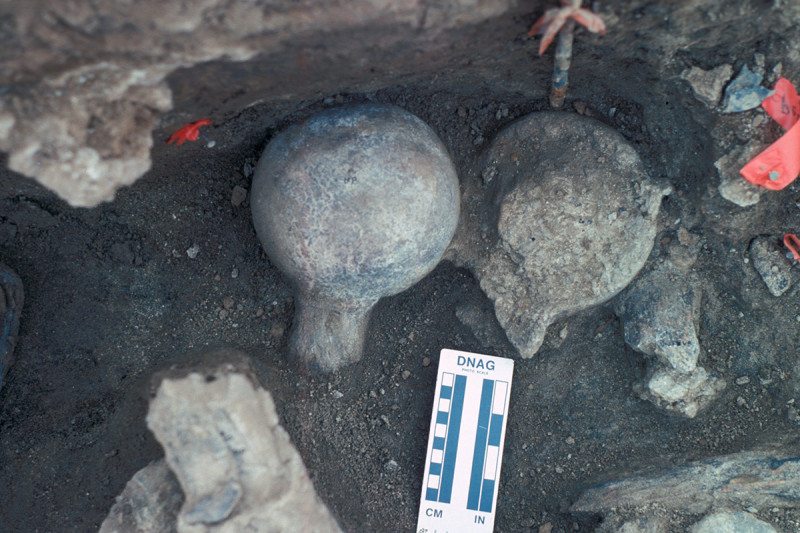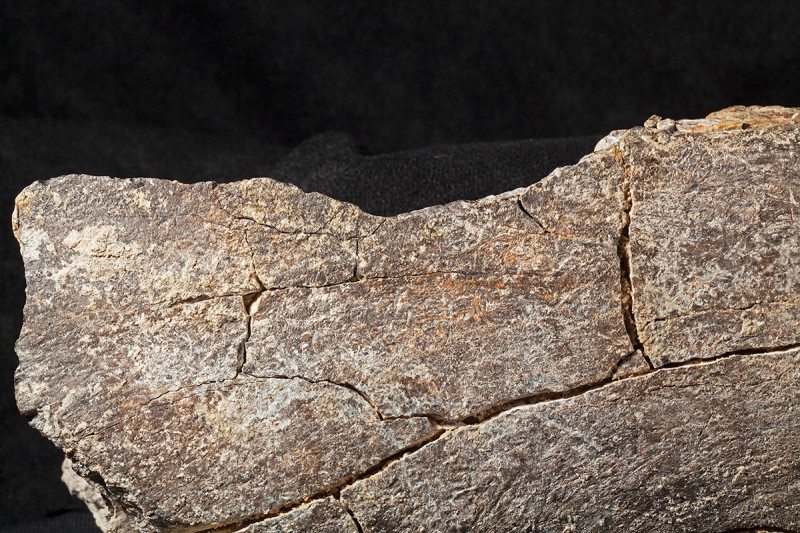
What should be clear is that this was a site of opportunity and no planned kill. such a site demands the use of tools to hand and breaking rocks to provide a crude cutting edge and a crude hasmmer is literally the first thing you would do if you are not overly equipped.
I certainly can see a Sasquatch doing just this. And no one doubts that they could actually have made the overland trip on their own steam. We have actually got sightings in the barrens. With that possibility in place we still have possibles in modern humanity, and the other old world known bipedal primates such as the Denisovans, and the Neanderthals. Yet those really demand excellent canoes at the least and that was only available around 20,000 years ago in the Bering sea.
North America was a harsh continent before the end of the Ice Age starting after the Pleistocene Nonconformity. As I have said earlier, this region was at the latitude then of Vancouver. Modern humanity and other bipedal primates occupied a temperate continental shelf at best at these latitudes.
First Americans may have been Neanderthals 130,000 years ago
Eaten by the first Americans?
26 April 2017
By Colin Barras
https://www.newscientist.com/article/2129042-first-americans-may-have-been-neanderthals-130000-years-ago/?
An extraordinary chapter has just been added to the story of the First Americans. Finds at a site in California suggest that the New World might have first been reached at least 130,000 years ago – more than 100,000 years earlier than conventionally thought.
If the evidence stacks up, the earliest people to reach the Americas may have been Neanderthals or Denisovans rather than modern humans. Researchers may have to come to terms with the fact that they have barely scratched the surface of the North American archaeological record.
“We often hear statements in the media that a new study changes everything we knew,” says Chris Stringer at the Natural History Museum in London. “If this result stands up to scrutiny, it does indeed change everything we thought we knew about the earliest human occupation of the Americas.”
The evidence comes from a coastal site in San Diego County, California. In the early 1990s, routine highway excavations exposed fossil bones belonging to a mastodon, an extinct relative of the elephant. Researchers moved in to examine the site, and they soon decided that this was no ordinary mastodon fossil.

Some of the mastodon bones that have been excavated
San Diego Natural History Museum Many of the bones and teeth were fragmented, some with “spiral” fractures that may be produced when humans break open fresh bone. Alongside the broken bones and teeth, the researchers found stone cobbles that had evidence of impact marks on their surfaces. Two were particularly large – about 15 centimetres in diameter – and each was surrounded by small bone and teeth fragments.
Taken together, the evidence points to one scenario, says team member Steven Holen at the Center for American Paleolithic Research in South Dakota. A group of early humans stumbled upon a fresh mastodon carcass and then removed bones and broke them open using stones as simple hammers – with the two larger cobbles serving as makeshift anvils. “The distribution of fractured pieces of bone right around the anvils is fairly conclusive evidence,” he says.
The mastodon bones would have been a good source of nutritious bone marrow. Alternatively, the early humans might have broken the bones to use as raw material – bone can be worked and sharpened to create tools.

The surface of a mastodon bone showing a half impact notch on a segment of femur
Tom Deméré, San Diego Natural History Museum None of this would be particularly controversial except for one final detail. Holen’s colleague – James Paces at the United States Geological Survey in Colorado – has used uranium-thorium isotope dating to age the mastodon fossils. The results suggest the remains are 131,000 years old, give or take 10,000 years. The current consensus view is that humans first reached the Americas much more recently, perhaps just 15,000 years ago.
“We believe we have a robust and defensible age for early humans being in America more than 100,000 years earlier than people had imagined,” says Paces.
Exactly who those people were is impossible to say as there were no human fossils at the Californian site. “But there are a range of possibilities,” says team member Richard Fullagar at the University of Wollongong in Australia. “They could have been Neanderthals or Denisovans.”
Both of these groups were probably present in Siberia more than 130,000 years ago. Holen says sea levels were low and a land bridge existed between Siberia and North America just before 130,000 years ago. Either group could in theory have wandered across.
Modern humans?
Alternatively, it might have been modern humans – Homo sapiens – that made it to the New World 130,000 years ago, says Fullagar. Recent archaeological evidence suggests our species was in China 120,000 years ago, which is far earlier than once thought. Perhaps modern humans were in East Asia even earlier than the Chinese fossils suggest, and moved into the Americas from there.
However, given that genetic studies strongly suggest that indigenous populations in North America trace their routes to much later episodes of colonisation, it would seem likely that whoever arrived there 130,000 years ago didn’t survive very long.
“The claims are extraordinary and the potential implications staggering,” says Jon Erlandson at the University of Oregon. Dennis Jenkins, also at the University of Oregon, simply describes the work as “mind-boggling”.
But both researchers – and many others – express extreme caution about the conclusions. “Broken bones and stones alone do not make a credible archaeological site in my view,” says Erlandson.
He singles out the supposed stone hammers and anvils as a particular weak point in the analysis. By 130,000 years ago, hominins elsewhere in the world were making elaborate stone tools. Nothing this complicated was found near the mastodon.
“I would expect to find more sophisticated tools and behaviour,” says María Martinón-Torres at University College London, who works on the early archaeological record of China.
Study scepticism
Simple stone tools of a similar age have been found in only one place: Homo floresiensis, the “hobbit”, left a record of relatively simple stone tools on the Indonesian island of Flores.
But even these tools show a level of complexity not seen at the mastodon site, says Adam Brumm at Griffith University in Queensland, Australia, who works on the Flores archaeological record. “If these are indeed humanly modified artefacts they make the typical hobbit tool look like an iPhone,” he says.
Brumm’s general reaction to the new study is scepticism. “Most archaeologists will simply never believe it – the dates are too old, the ‘tools’ too untool-like and the implications too mind-boggling.”
Fullagar isn’t disheartened by such scepticism, though. “I’ve spent about four years looking at these artefacts and the team has been looking at the evidence for about 24 years,” he says. “It’s understandable that it might be difficult to get your head around the nature of this evidence in a couple of days.”
And the reaction to the new evidence isn’t universally sceptical. Gerrit van den Bergh was already aware of the research because he works at the University of Wollongong alongside Fullagar. “I think the team has very strong arguments and good evidence,” he says.
Stringer is also prepared to be open-minded. “The paper has come through thorough peer review,” he says. “[But] many of us will want to see supporting evidence of this ancient occupation from other sites before we abandon the conventional model.”
No comments:
Post a Comment